its paid sponsors, whose products you need!
“Stay ‘unreasonable.’ If you
don’t like the solutions [available to you], come up with your
own.”
Dan Webre
The Martialist does not
constitute legal advice. It is for ENTERTAINMENT
PURPOSES ONLY.
Copyright © 2003-2004 Phil Elmore, all rights
reserved.
A Brief Catalog of Empty-Hand Blows
By Phil Elmore
As a writer, my livelihood is at least indirectly affected
by my ability to type. As a result I avoid needless injury to my
hands whenever possible. While most people aren’t writers, they also
have a great many very important uses for their hands. Slamming clenched
fists into resisting objects is a good way to break your fingers or do other
damage to your mitts. There’s another reason to avoid clenched-fist
punches, too the increased danger of abrasions to the fist, through which blood-borne
diseases can be introduced if one’s opponent bleeds during a fight.
Those of us concerned about damage to the hands therefore
turn to empty-hand blows. Empty-hand blows permit the delivery of force
while decreasing the danger of damage. They’re also less likely to
abrade the opponent (hard knuckles are not crashing into parts of the
opponent’s anatomy) and therefore less likely to expose you to his blood.
WARNING! The Martialist accepts
no responsibility for injuries that occur during training. Train under
appropriate supervision and take all necessary safety precautions. Do
not attempt techniques for which you are not qualified.
The following list of strikes is not inclusive
(I’m sure you can come up with a different strike or a variation of one shown
if you try), but it’s a fairly comprehensive list of the empty-hand strikes I
use regularly. None of these is a “magic bullet,” of course
all of them depend on context to be useful.
Empty-Hand Blows
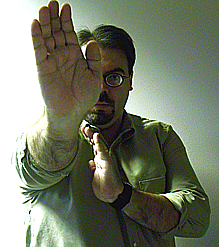 |
PALM HEEL
This is a strike with the meaty heel of your palm (the |
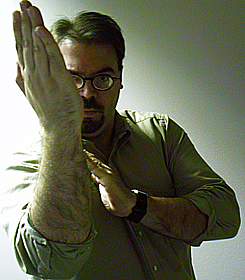
|
EDGE OF HAND
This is another powerful strike that, while it can be quite
|
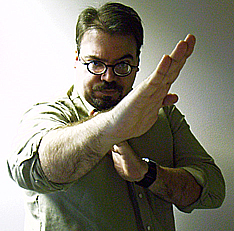
|
BACKHAND EDGE OF HAND
This is the same edge-of-hand blow, but performed as a
|
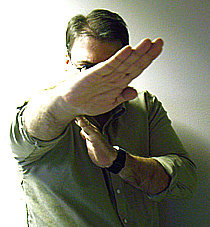 |
BIL JEE
A Wing
|
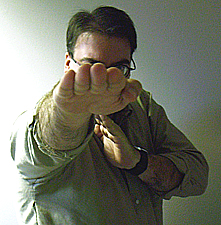 |
BIL JEE (FINGERTIPS)
The Bil Jee can also be performed as a fingertip jab, typically to
|
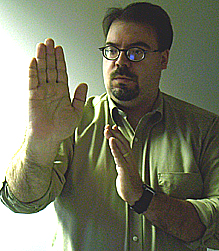 |
PLUM FLOWER 1
This is simple forward palm strike that looks similar to the palm heel,
|
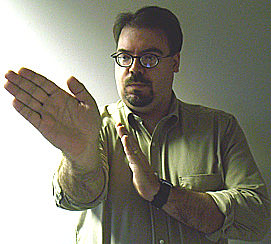 |
PLUM FLOWER 2
This
|
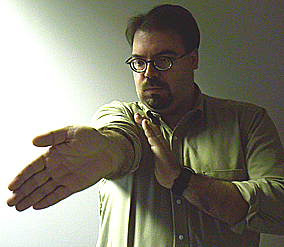 |
PLUM FLOWER 3
The third plum flower palm position is best used for striking low
|
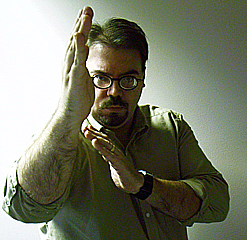 |
ROTATING FINGER THRUST, PART 1 The rotating finger thrust, a signature move of Shanliang
|
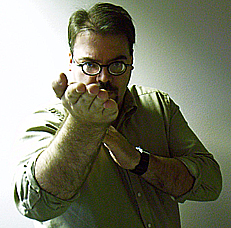 |
ROTATING FINGER THRUST, PART 2 …which shifts as the hand rotates clockwise (from my perspective
|
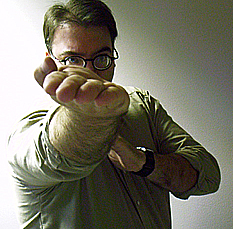 |
ROTATING FINGER THRUST, PART 3 …terminating in an extended, palm-up finger jab
|
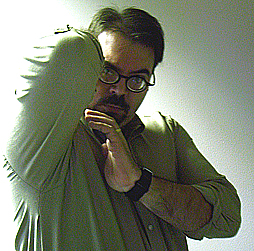 |
DRIVING ELBOW
The also be a rising elbow at its termination or the beginning of a vertical elbow strike. |
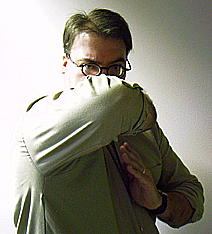
|
CROSS ELBOW
When not a rising or falling elbow, the elbow can be delivered
|
I will not attempt to address here the debate over whether
closed fists must be included in one’s unarmed techniques for effective
self-defense. Opinions on the matter range from always to never
and are beyond the scope of this article. If you do not now incorporate
empty-hand strikes in your training, however, you really ought to consider
doing so.
The empty hand (and the elbow) allow one
to use the body’s natural weapons to great effect.
